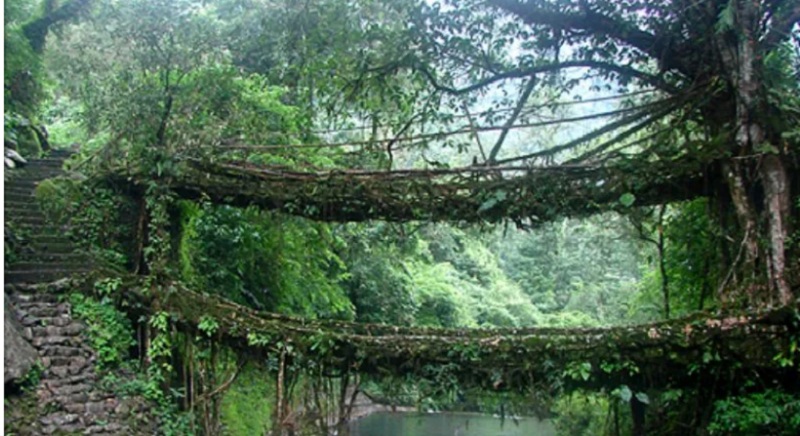Shillong: The Meghalaya government has missed the February deadline to submit the nomination dossier of ‘Living Root Bridges’ for consideration by the United Nations Educational Scientific and Cultural Organisation(UNESCO).
Junhi Han, Chief of the Culture Unit at UNESCO’s New Delhi South Asia Regional Office, explained that the rigorous nomination process typically takes around 18 months.
Han, who was in attendance at a workshop on preparing World Heritage nomination dossiers, stated that the annual deadline for submitting these dossiers to the World Heritage Centre in Paris is early February.
“Since the 2025 deadline has already passed, the Meghalaya government will have to target February 2026 for its submission. If the dossier is deemed complete and it meets UNESCO’s eligibility criteria, it will move on to the evaluation stage,” the UNESCO representative said.
She also said that the final decision on whether the Living Root Bridges will be inscribed as a World Heritage Site will be made by the World Heritage Committee in 2027.
The Department of Art and Culture organised a one-day workshop on Tuesday at the Heritage Club, Tripura Castle, in Shillong, which aimed at guiding the preparation of the World Heritage nomination dossier titled “Jingkieng Jri: Living Root Bridges Cultural Landscapes.”
The UNESCO official and her team attended the workshop for guiding the preparation of world heritage nomination dossier.
She said the Meghalaya Living Root Bridges made of rubber tree (ficus elastica) are unique compared to traditional bridges made of cane and bamboo by Lepcha communities in the Dzongu Tribal Reserve under the Khangchendzonga Biosphere Reserve in Sikkim.
The workshop was attended by Padma Shri Prof David Syiemlieh, Principal Secretary of Forest and Environment Sampath Kumar and Principal Secretary of Art and Culture FR Kharkongor.
So far, 131 Living Root Bridges have been documented, although experts believe many others, located in challenging terrain, have remained undiscovered.
The UNESCO team is scheduled to conduct a visit to the sites of Living Root Bridges,locally known as Jingkieng Jri, on Wednesday.
ALSO READ: Meghalaya government launches climate initiatives, inaugurates hostels in Garo Hills
Sampath Kumar highlighted that preservation efforts for the Living Root Bridges began in 2018, noting that Chief Minister Conrad K Sangma had expressed strong interest in pursuing UNESCO recognition and pledged full support for the initiative.
“We are hopeful about the inclusion of our Living Root Bridges or Jingkieng Jri in the World Heritage list. This workshop is a significant step towards that goal,” Kharkongor stated.















